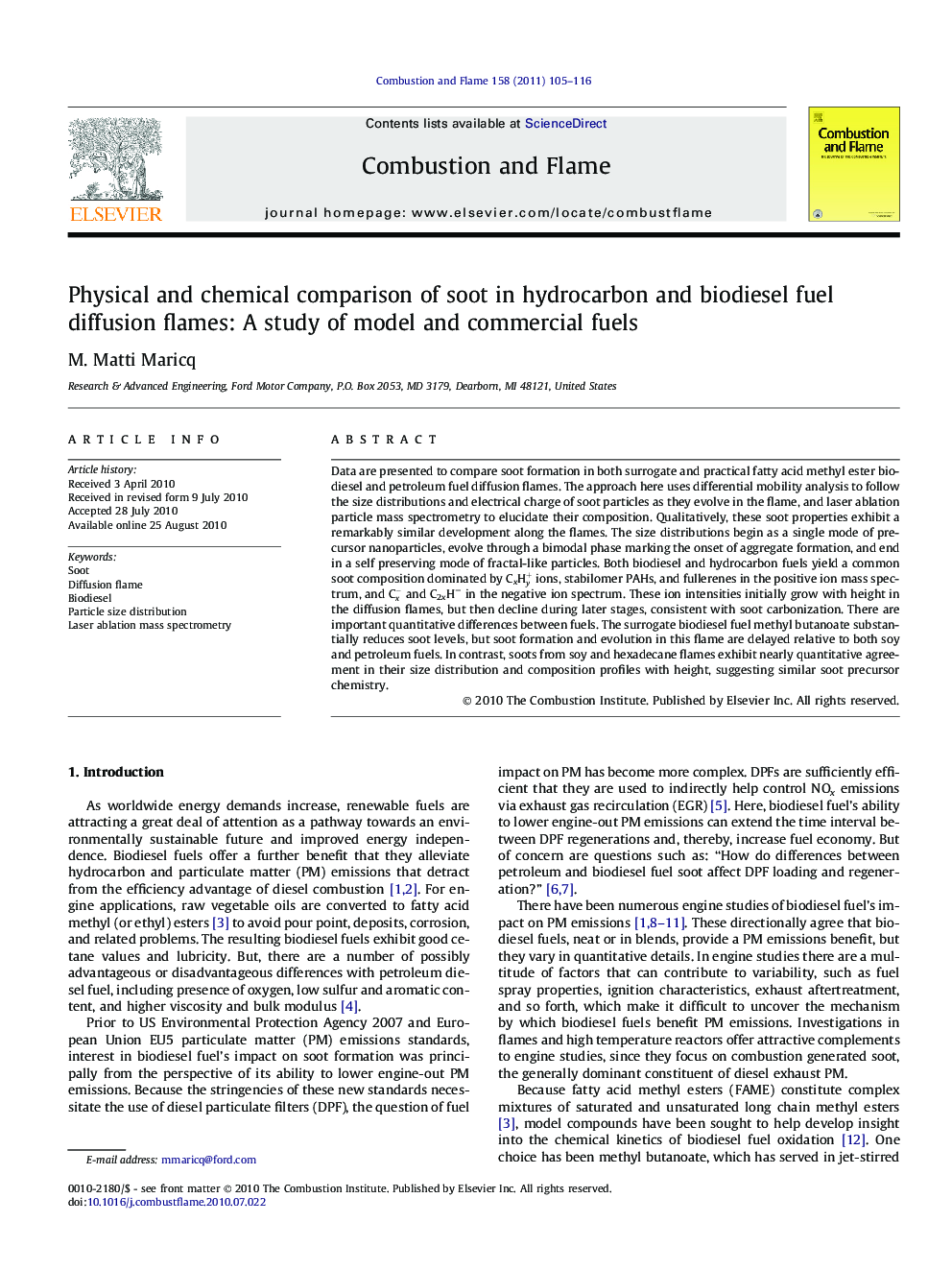| Article ID | Journal | Published Year | Pages | File Type |
|---|---|---|---|---|
| 169549 | Combustion and Flame | 2011 | 12 Pages |
Data are presented to compare soot formation in both surrogate and practical fatty acid methyl ester biodiesel and petroleum fuel diffusion flames. The approach here uses differential mobility analysis to follow the size distributions and electrical charge of soot particles as they evolve in the flame, and laser ablation particle mass spectrometry to elucidate their composition. Qualitatively, these soot properties exhibit a remarkably similar development along the flames. The size distributions begin as a single mode of precursor nanoparticles, evolve through a bimodal phase marking the onset of aggregate formation, and end in a self preserving mode of fractal-like particles. Both biodiesel and hydrocarbon fuels yield a common soot composition dominated by Cx Hy+ ions, stabilomer PAHs, and fullerenes in the positive ion mass spectrum, and Cx- and C2xH− in the negative ion spectrum. These ion intensities initially grow with height in the diffusion flames, but then decline during later stages, consistent with soot carbonization. There are important quantitative differences between fuels. The surrogate biodiesel fuel methyl butanoate substantially reduces soot levels, but soot formation and evolution in this flame are delayed relative to both soy and petroleum fuels. In contrast, soots from soy and hexadecane flames exhibit nearly quantitative agreement in their size distribution and composition profiles with height, suggesting similar soot precursor chemistry.
